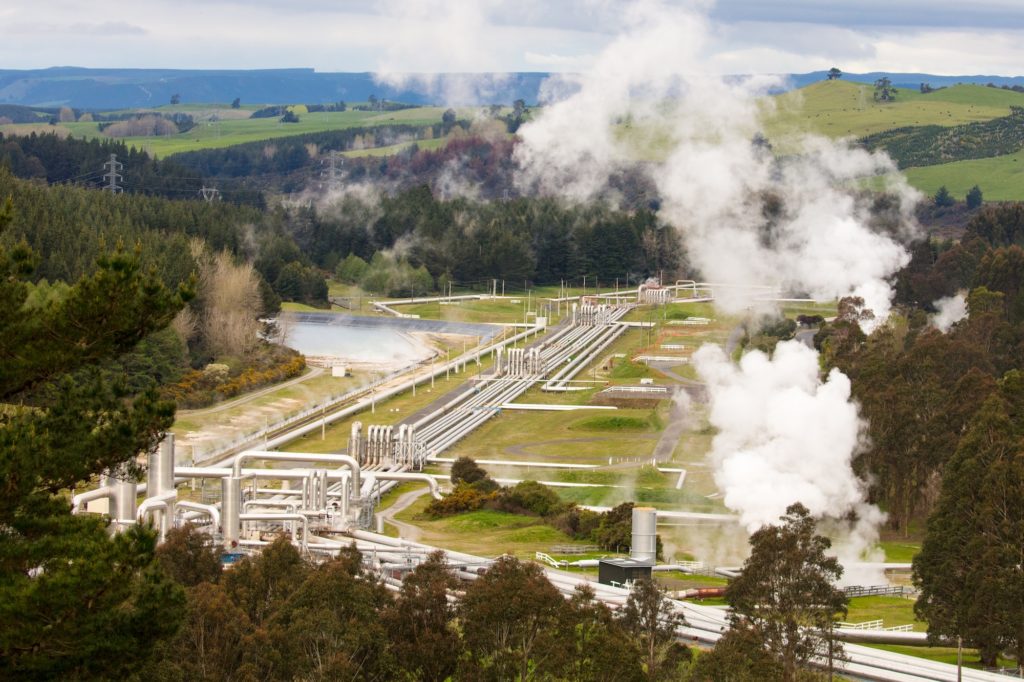As part of its efforts to ensure carbon emission-free electricity generation, the U.S. Department of Energy (DOE) recently declared it would provide up to $74 million for up to seven EGS-based pilot projects.
The aim is to ramp up the development of the geothermal industry by continuously testing the scalability and efficacy of enhanced geothermal systems (EGS).
DOE hopes these pilot projects will help trap the Earth’s nearly inexhaustible heat resources in different geologic settings.
A lion’s share of this $74 million investment will come from the President’s Bipartisan Infrastructure Law (BIL) that helps facilitate the use of breakthrough technologies and advanced techniques.
DOE’s Fourth Energy Earthshot
In a move to slash the cost of geothermal power by 90% to $45 per MWh by 2035, DOE launched the new Enhanced Geothermal Shot™.
The Enhanced Geothermal Shot™ is part of DOE’s Energy EarthShots Initiative, which was launched in September 2022.
This $74M is the first funding opportunity announced as part of DOE’s effort to produce clean, safer energy since the launching of the Enhanced Geothermal Shot™ last year.
Enhanced Geothermal Systems
The EGS—human-made geothermal reservoirs—are built to inject high-flow water/fluid into naturally hot (~150°C) and impermeable deep rocks through an injection borehole and extract heat by forming or re-opening a subsurface fracture network.
The high-temperature dry rock (HDR) area acts as a heat exchanger in an EGS reservoir.
In an EGS system, the reservoir’s natural permeability is boosted by stimulating fracture formation and ensuring a constant water flow.
The result: increased size and connectivity of water pathways that allow water to circulate through the fractures of the deep rocks
This constant flow of fluid, when in contact with the subsurface rock areas, gets heated up, backs to the surface through the production barehole, and finally is extracted for electricity generation.
The concept behind the EGS system is to enhance the economics of geothermal resources without adequate water and/or permeability.
EGS aims to tap a continuum of geothermal resources—ranging from dry rocks to traditional hydrothermal resources.
After deployment, EGS functions just as naturally occurring hydrothermal systems.
When it comes to ensuring the safe deployment of EGS reservoirs while also maximising its operational efficiency, leveraging a high-end geothermal monitoring tool is a sensible decision.
A solution like the one offered by Silixa can effectively facilitate the long-term monitoring of geothermal reservoirs and help operators comply with regulations.
EGS’s Potential to Increase Electricity Production
Geothermal power plants currently generate 3.7 GW of electricity in the US, accounting for around 0.4% of the net.
However, with EGS deployed, geothermal energy which is inaccessible using conventional technologies, can be tapped to generate as much as 90 GW of electricity by 2050.
“Advances in enhanced geothermal systems will help introduce geothermal energy in regions where, until recently, the use of this renewable power source was thought to be impossible,” said United States Secretary of Energy, Jennifer M. Granholm, in a statement last Wednesday. “These pilot demonstrations will help us realise the enormous potential of the heat beneath our feet to deliver clean, renewable energy to millions of Americans.”
Marking geothermal as an enormous source of renewable energy, the secretary of energy anticipates that around 45% of U.S. houses can be powered by the Earth’s heat at some point.
Wrapping Up
DOE hopes these BIL-funded EGS pilot demonstration projects would act as a step-change in meeting the booming demand for electricity while also helping hit President Biden’s goals of attaining deep decarbonisation in electricity generation by 2035.
